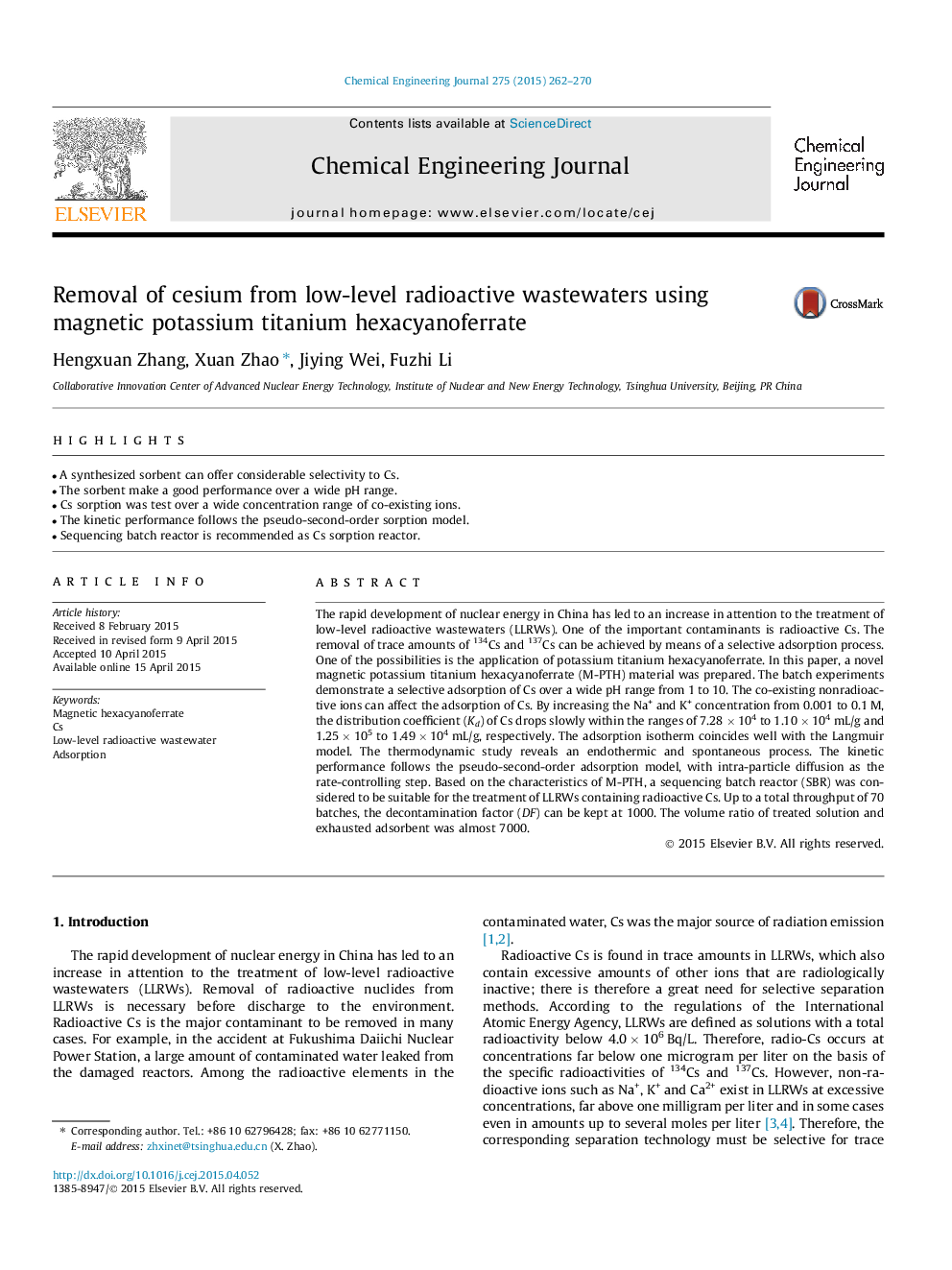| کد مقاله | کد نشریه | سال انتشار | مقاله انگلیسی | نسخه تمام متن |
|---|---|---|---|---|
| 146265 | 456365 | 2015 | 9 صفحه PDF | دانلود رایگان |
• A synthesized sorbent can offer considerable selectivity to Cs.
• The sorbent make a good performance over a wide pH range.
• Cs sorption was test over a wide concentration range of co-existing ions.
• The kinetic performance follows the pseudo-second-order sorption model.
• Sequencing batch reactor is recommended as Cs sorption reactor.
The rapid development of nuclear energy in China has led to an increase in attention to the treatment of low-level radioactive wastewaters (LLRWs). One of the important contaminants is radioactive Cs. The removal of trace amounts of 134Cs and 137Cs can be achieved by means of a selective adsorption process. One of the possibilities is the application of potassium titanium hexacyanoferrate. In this paper, a novel magnetic potassium titanium hexacyanoferrate (M-PTH) material was prepared. The batch experiments demonstrate a selective adsorption of Cs over a wide pH range from 1 to 10. The co-existing nonradioactive ions can affect the adsorption of Cs. By increasing the Na+ and K+ concentration from 0.001 to 0.1 M, the distribution coefficient (Kd) of Cs drops slowly within the ranges of 7.28 × 104 to 1.10 × 104 mL/g and 1.25 × 105 to 1.49 × 104 mL/g, respectively. The adsorption isotherm coincides well with the Langmuir model. The thermodynamic study reveals an endothermic and spontaneous process. The kinetic performance follows the pseudo-second-order adsorption model, with intra-particle diffusion as the rate-controlling step. Based on the characteristics of M-PTH, a sequencing batch reactor (SBR) was considered to be suitable for the treatment of LLRWs containing radioactive Cs. Up to a total throughput of 70 batches, the decontamination factor (DF) can be kept at 1000. The volume ratio of treated solution and exhausted adsorbent was almost 7000.
Journal: Chemical Engineering Journal - Volume 275, 1 September 2015, Pages 262–270
